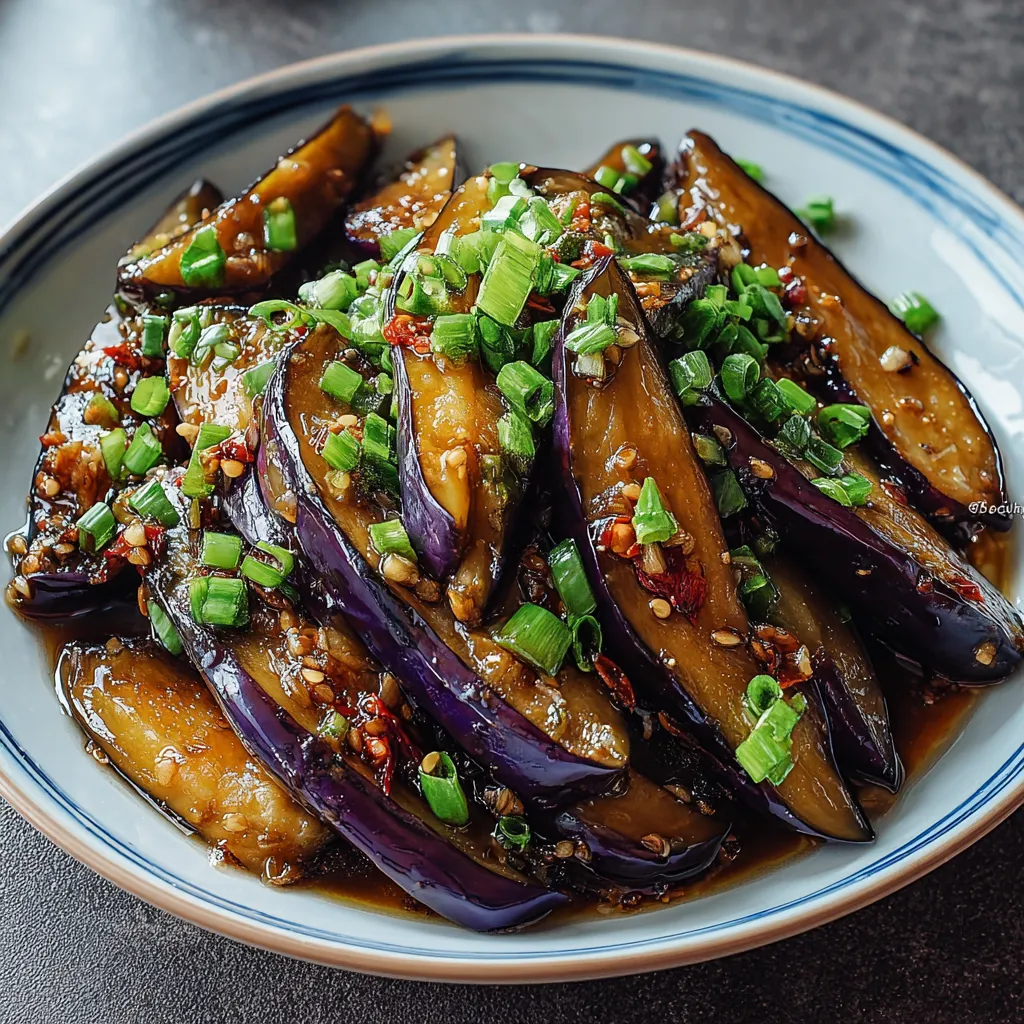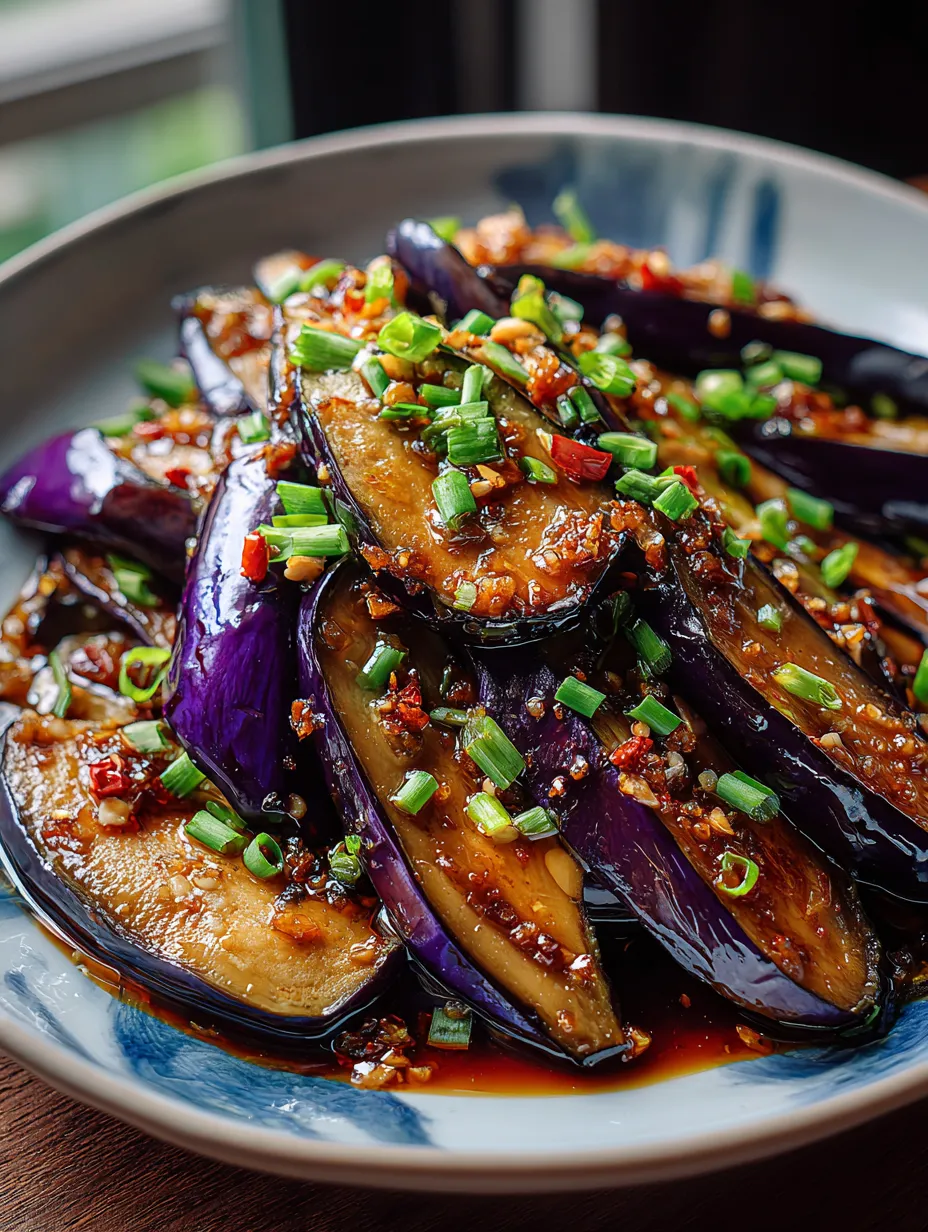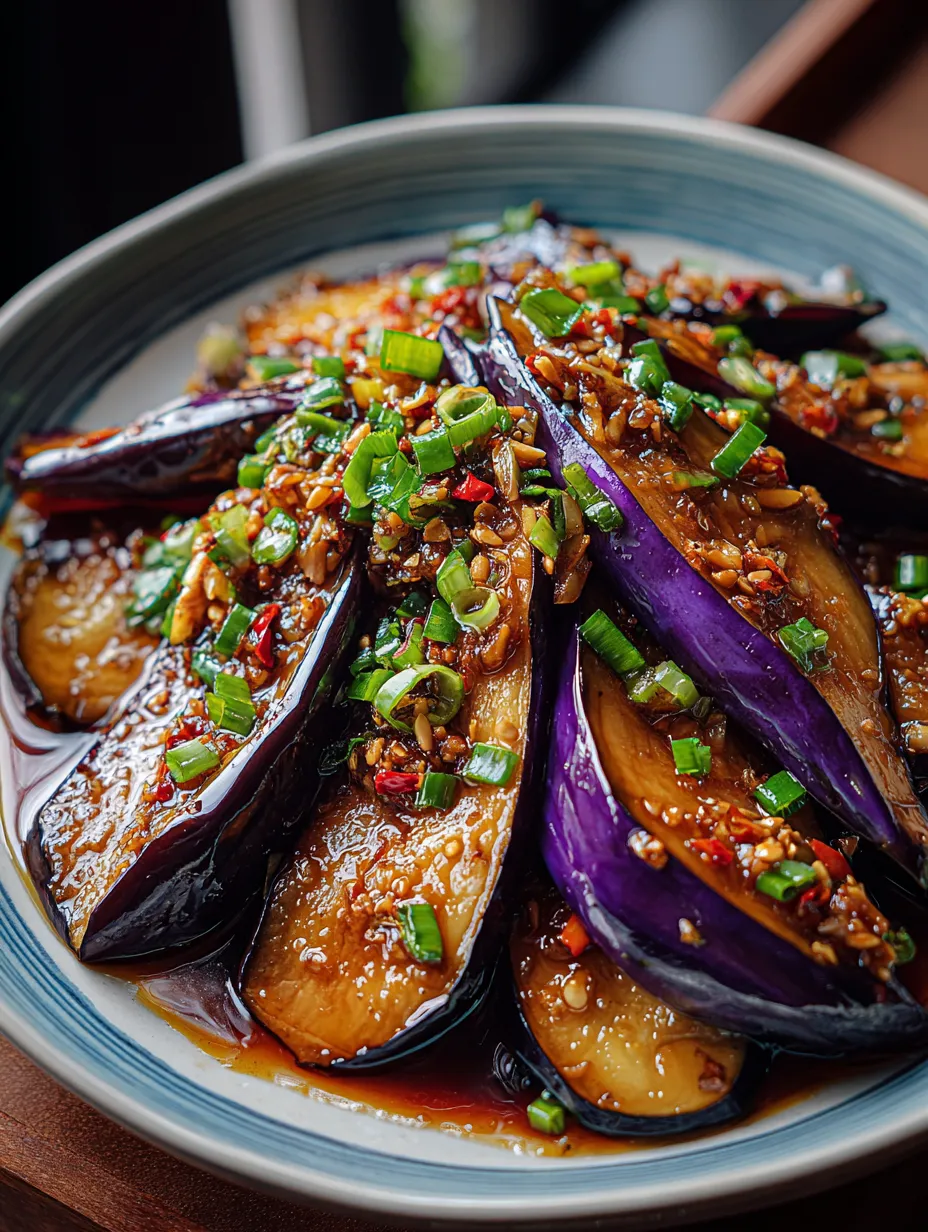 Pin it
Pin it
When I’m after big flavors that don’t take forever, Chinese Eggplant with Garlic Sauce is my go-to. In not much time, plain eggplants get a glossy coat and soak up punchy garlic, mellow vinegar, and plenty of cozy vibes. It all comes together fast and is perfect over a hot bowl of rice when you want to eat well but don’t want to fuss.
I didn’t know eggplant could taste so creamy until I tried frying it this way. Seriously, it turned even the biggest eggplant doubters I know into converts after one forkful.
Unbeatable Ingredients
- Cooked rice: Gotta have a big bowl under everything or nothing gets soaked up—use jasmine or whatever you love
- Red pepper flakes: If you want a little fire, toss in a pinch—but don’t overdo it or you’ll miss that eggplant sweetness
- Sesame oil: Wait until the last step and just drizzle a little in for that toasty smell—get the roasted kind for best oomph
- Water: Helps make everything saucy—plain tap or filtered is fine
- Cornstarch: Gets the sauce thick quick and helps it hug the eggplant—sift if you find clumps
- Sugar: Rounds out the tang from vinegar and makes things shiny
- Rice vinegar: You want the plain, unseasoned kind for a clean finish that cuts through the savory flavors
- Soy sauce: This is where that salty, deep taste comes from—naturally brewed is best for richness
- Green onions: Both green and white parts add a gentle bite and brighten everything up at the end
- Ginger: Fresh and finely grated gives this a warm kick and blends into the sauce
- Garlic: Fresh cloves smashed or minced for that pop—skip any with green inside so it’s sweet not bitter
- Vegetable oil: A neutral oil keeps things from sticking and delivers the golden sear you want
- Chinese eggplant: Pick ones that are shiny and firm for the softest texture and light flavor
Step-by-Step Directions
- Combine and Finish:
- Toss those cooked eggplants right back into the pan and mix well so they’re fully coated. Let them warm in the sauce for a minute or two, then sprinkle green onions on top along with a few drops of sesame oil. If you want a little spice, throw in some red pepper flakes. Serve everything super hot with your rice.
- Build the Garlic Sauce:
- Still using the same pan (and extra oil if needed), add in the ginger and garlic. Stir for just around a minute until it smells really good, but don’t let it brown. At the same time, whisk together your soy sauce, water, cornstarch, rice vinegar, and sugar in a bowl. Pour this into your pan while stirring. The sauce will bubble and go glossy in a couple of minutes.
- Brown the Eggplant:
- Heat a broad skillet or wok with your veggie oil over medium-high. When it’s hot, arrange eggplant slices in a single layer. Leave them alone for a few minutes so they brown up, then move them around from time to time until the pieces turn golden and just tender—about 8–10 minutes. If they crowd the pan, do this in shifts for the best browning. Move them to a plate for later.
- Cut and Soak Eggplant:
- Rinse eggplants, then cut into thick slices about two inches long and half an inch wide for even cooking. Got a seed-heavy or bigger eggplant? Soak the pieces in salted water for ten minutes for that creamy bite and milder taste. Dry them super well with paper towels after draining.
 Pin it
Pin it
Nothing beats the smell of garlic floating through the house while this simmers. Everybody in my family jokes that even if I yell that dinner’s ready, the real thing that brings them running is the smell from the kitchen.
Smart Storage
Pop leftovers into something sealed tight and refrigerate for up to three days. When it’s time to reheat, add a splash of water and cover before microwaving—or warm it gently in a skillet so the sauce loosens back up. Freezing works too: just spread the portions out first, then transfer to bags. Eggplant gets a bit softer, but still tastes great thawed.
Swap Options
If Chinese eggplants are missing from your store, grab any smaller, tender-skinned variety and slice them thin. Use tamari instead of soy sauce if you need gluten-free. No rice vinegar? Try cider vinegar in a pinch. White sugar can swap for honey to add a floral touch, and you can fry in sunflower or avocado oil too.
How to Serve
Ladle the saucy eggplant right onto steaming jasmine or brown rice to soak up everything. It’s just as delicious next to steamed greens or crispy tofu. For a twist, serve leftovers over noodles—wheat or cold soba are both fun options.
 Pin it
Pin it
Origin & Traditions
Eggplant is a true favorite in lots of Chinese cuisines, with a special talent for soaking up bold sauces while turning tender. Mixing up garlic sauce this way is a real classic—in places like Sichuan you’ll spot spins using chili bean paste or dark vinegar. Whether at home or in a restaurant, it’s a longtime hit for good reason: simple stuff, big taste.
Frequently Asked Questions
- → How do I keep eggplant from becoming bitter?
Just let the eggplant soak in salty water for 10 or 15 minutes, then dry it well before cooking. This tones down any bitterness.
- → Can I use regular eggplant instead of Chinese eggplant?
Yep, standard eggplant works. Chinese types are softer and less bitter, but slice the regular ones thin so they cook through.
- → Is this dish spicy?
A bit of chili flake brings some kick, but you can skip or pile more in, whatever suits you best.
- → What’s the best way to serve this dish?
Ladle it right onto some hot rice. Toss some green onions on top, and maybe a splash of sesame oil for more flavor.
- → Can I make this ahead of time?
Best eaten fresh but if you’ve got leftovers, stash them in the fridge. Warm up gently when you’re ready to eat.
